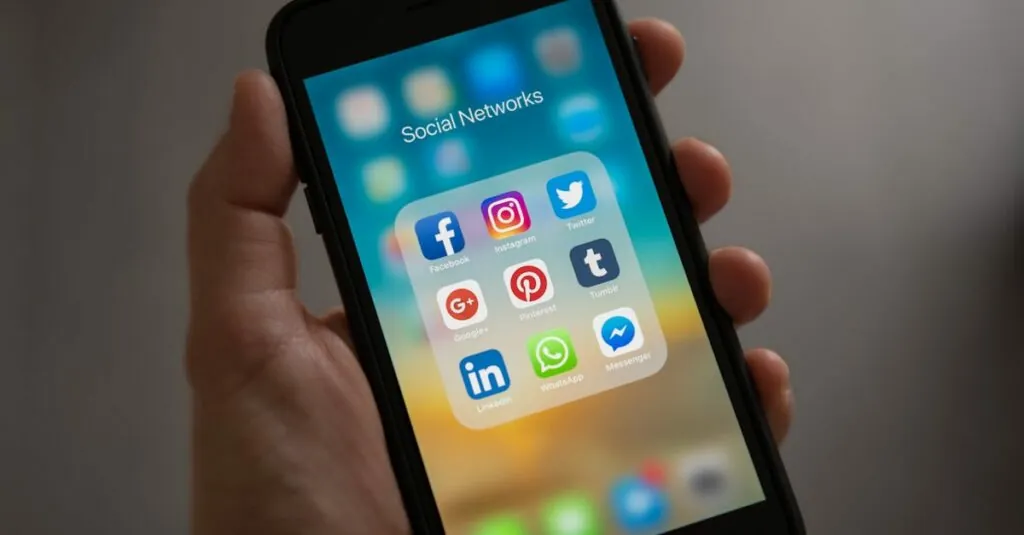Touch screens are like that overly enthusiastic friend who just can’t take a hint. Sometimes they misinterpret your gentle taps as full-on karate chops, leaving you frustrated and ready to throw your iPhone out the window. But before you resort to drastic measures, there’s good news: calibrating your touch screen can bring back the harmony in your digital relationship.
Table of Contents
ToggleUnderstanding Touch Screen Calibration
Touch screen calibration ensures accurate response to user inputs. Proper calibration enhances user experience and resolves frustrating touch issues.
Importance of Calibration
Calibration significantly impacts touch screen performance. It helps align the screen’s sensors with the user’s touch, ensuring precise interactions. Improved accuracy leads to better app responsiveness and fewer errors when scrolling or selecting. Users gain operational efficiency with calibrated screens, enhancing productivity during tasks. Consistent calibration contributes to the longevity of the touch screen functionality. Maintaining this function reduces irritation and increases overall satisfaction with the device.
Signs That Calibration Is Needed
Multiple signs indicate that touch screen calibration is necessary. Users may notice delayed responses when tapping, leading to missed selections. Inconsistent touch sensitivity often frustrates interactions, resulting in unintended actions. If the touch screen registers presses inaccurately, such as tapping in one location but activating another, calibration becomes essential. Frequent misinterpretation of light taps as strong presses often signals that the device needs adjustment. Observing these signs helps users decide when to calibrate their iPhone touch screen, thus restoring optimal performance.
Preparing for Calibration
Calibration requires preparation to ensure a smooth process. Users must check for the latest software updates and back up their data to avoid potential data loss.
Checking Software Updates
Software updates often include enhancements that improve touch screen performance. To check for updates, navigate to Settings, select General, and tap Software Update. If an update is available, users should download and install it. Regularly updating the device ensures it runs efficiently, fixing bugs that could impact touch sensitivity. Users often notice enhanced responsiveness after installing updates. Keeping software current can prevent many calibration issues.
Backing Up Your Data
Backing up data protects against unintended loss during calibration. Users can back up their data using iCloud or iTunes. For iCloud, go to Settings, tap on the user’s name, select iCloud, and choose iCloud Backup. Activate Back Up Now. For iTunes, connect the iPhone to a computer, open iTunes, and click on the device icon to select Back Up Now. Regular backups secure important contacts, photos, and apps. This step adds peace of mind before making any adjustments to the touch screen.
Step-by-Step Guide on How to Calibrate Touch Screen on iPhone
Calibrating an iPhone touch screen enhances responsiveness and accuracy. Users can utilize built-in tools or third-party apps for calibration.
Using Built-In Calibration Tools
iPhones do not have explicit built-in touch screen calibration settings, but automatic adjustments occur during software updates. Once users update their devices, the system recalibrates sensors, often resolving touch sensitivity issues. To access the latest updates, navigate to Settings, then General, and select Software Update. Regularly checking for updates ensures optimal touch functionality and can mitigate common frustration caused by sensitivity delays or misregistrations.
Third-Party Calibration Apps
If users require further adjustments, they can explore third-party calibration apps. Numerous apps in the App Store offer calibration solutions designed to enhance touch screen accuracy. Apps like Touchscreen Calibration and Touchscreen Test provide guided steps for calibration. After downloading the app, follow the instructions for optimal touch response. Users should consult app reviews and ratings to find reliable applications that suit their specific needs.
Troubleshooting Calibration Issues
Calibration issues can arise even after following the calibration process. Identifying common problems and their solutions can aid in restoring touch screen functionality.
Common Problems and Solutions
Users often face delayed responses when tapping the screen. Restarting the device can sometimes rectify this issue. Unresponsive areas on the screen also signal calibration problems; cleaning the screen with a microfiber cloth is an immediate solution. Inconsistent sensitivity may prompt frustration. Adjustments through third-party apps can address these inconsistencies. Regularly checking for software updates is essential as manufacturers frequently release improvements that help enhance touch responsiveness.
When to Seek Professional Help
Persistent calibration issues may indicate underlying hardware problems. If the touch screen is still unresponsive after troubleshooting, seeking professional help becomes necessary. A technician can diagnose potential issues more thoroughly through specialized tools. Physical damage, such as cracks or water exposure, often requires professional repair services. When in doubt, it’s advisable to schedule an appointment at an authorized service center. By doing this, users ensure that their devices receive the best care and attention.
Calibrating the touch screen on an iPhone is essential for maintaining an optimal user experience. By recognizing signs of calibration needs and following the outlined steps, users can enhance their device’s responsiveness and accuracy. Regular software updates and proper maintenance play a vital role in ensuring the touch screen functions effectively.
If calibration issues persist despite following the necessary steps, seeking professional assistance may be the best course of action. This ensures that any underlying hardware problems are addressed promptly. With proper care and attention, users can enjoy a seamless interaction with their iPhones, making everyday tasks more efficient and enjoyable.








